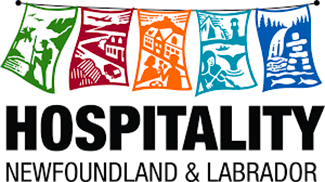Preliminary results of an Ontario study that involved thousands of airplane passengers have delivered promising outcomes for point-of-entry COVID-19 testing, but it is not yet swaying officials in Newfoundland and Labrador, where a controversial ban on incoming travel remains in effect.
The study, led by McMaster Health Labs — which bills its work as the largest study of of its kind — tested more than 16,000 international travellers on arrival at Pearson International Airport in Toronto. The tests were taken from the beginning of September through to mid-November.
The passengers agreed to three rounds of testing that they performed themselves, with a take-home kit: a nasal/cheek swab on Day 1, again on Day 7 and then on Day 14.
On Nov. 17, researchers released data looking at the tests performed for the study’s first month, of which one per cent of travellers tested positive for COVID-19.
Of that number, the majority — 70 per cent — were positive on the day they arrived. As well, 94.3 per cent of cases were positive by Day 7, with only 5.6 per cent testing positive by Day 14.
One of the lead researchers said the preliminary findings show early testing on travellers works.
“I think it’s mostly a good news story. It’s not a perfect story, and it’s certainly one where we’re not the ones to set quarantine policy,” said Dr. Marek Smieja, the scientific director of McMaster HealthLabs and a professor at McMaster University in Hamilton.
Study not enough: premier
Smieja said researchers hope to figure out more precisely what the risk is of a traveller testing positive at the end of the full two-week quarantine period.
“What we can say right now is we think the risk is in that neighborhood of one in a thousand,” Smieja told CBC News Tuesday.
“Which in the Toronto area, when you have a certain amount of community spread, that may be a fairly low number. It may be for you in Newfoundland, that if you have very little spread, one in the 1,000 may or may not be acceptable.”
It doesn’t appear to be acceptable to public health officials in Newfoundland and Labrador, who mostly poured cold water on the study results at a COVID-19 briefing on Wednesday.
Premier Andrew Furey emphasized that arrival tests can have a 30 per cent false negative result.
“The point of entry [test], we’re concerned, may cause a false sense of security, and therefore cause extra disease spread, which wasn’t really reflected in the McMaster study to date,” Furey said.
Two recent clusters of COVID-19 cases, in Grand Bank and Deer Lake, have been linked to rotational workers who travel to other provinces for employment, and who spread the virus on to family members on arrival home. But Chief Medical Officer of Health Dr. Janice Fitzgerald said that rules for all 20,000 or so rotational workers in the province weren’t necessarily about to change due to those cases.
“We have to consider the number of people who have come back, and have not spread it to their family members. We have to remember that. And no system is going to be perfect, but as I’ve said before, we cannot create policy based on one of two specific examples, or one or two cases,” she said.
“We have to look at the whole picture and decide where is the best use of our resources.”
Data meant to provide ‘fulsome debate’
Their comments come two days after the province tightened its rules around returning rotational workers. Workers are now eligible to be tested on Day 7, an increase from testing on Day 5, and if negative results come back, may end their self-isolation earlier than the 14 days required for most other travellers.
Smieja did note there is a case to be made to keep the two-week rule firm in jurisdiction with mostly travel-related cases— a point Health Minister John Haggie and others have emphasized repeatedly in this province — although it requires everyone to follow the rules.
“I think if everybody perfectly complied with quarantine, if there were no downsides to that, that’s a pretty useful way of managing this risk and has worked reasonably well around the world,” he said.
The McMaster study did test regardless of symptoms, and Smieja said having that day-of-arrival test can help protect others from exposure, whether it be family members or flagging fellow passengers early on.
“I think arrival testing tells us activity, and may tell us that we need to do a look back on who is on that flight,” he said.
“Sometimes, it also tells us if that person is in quarantine, but let’s say they’re interacting with family members who didn’t travel, well, we have to protect the family members. So it’s useful in that way.”
The province does advise people in 14-day isolation not to interact with other members of their households.
Newfoundland and Labrador’s so-called travel ban prohibits free movement of incoming travellers, who must apply in advance for an exemption. Government officials say the ban, which has withstood a challenge at Supreme Court of Newfoundland and Labrador, is a key part of a strategy that has kept COVID-19 caseloads among the lowest in Canada.
As of Friday morning, there were 25 active cases in the province.
On Monday, Furey suspended N.L.’s participation in the Atlantic Bubble, which allowed residents of the four Atlantic provinces to move about the region.
Smieja said the study, once complete and compiled, may be of use across Canada and elsewhere, with no imminent vaccine, cases continuing to rise, and more testing strategies required.
“I think it provides data, and then there will be, you know, provincial and federal political decisions in terms of how to best use that data. Could that frequent traveler be allowed out sooner, or is that an unnecessary risk? I think we’re providing data for a fulsome debate of that,” he said.
The study was funded, in part, by Air Canada and the Greater Toronto Transit Authority — two entities with a vested interest in encouraging more air travel. Smieja said that financial help was needed to make the study happen, but crunching all the numbers and coming to conclusions is happening without their involvement.
“We’ll do all of these analyses independently. And all of these results are discussed, publicly discussed, with our public health colleagues, before being released to the public,” he said.
View the article on CBC here.


0 Comments